 W
WAmerican cuisine is primarily Western in origin, but has been significantly influenced by native American Indians, African Americans, Asians, Pacific Islanders, and many other cultures and traditions, reflecting the diverse history of the United States.
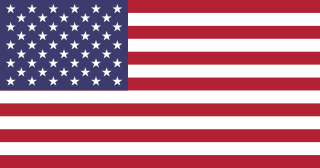 W
WEmigration from the United States is the process where individuals from the United States move to live in other countries, creating an American diaspora. The process is the reverse of the immigration to the United States. The United States does not keep track of emigration, and counts of Americans abroad are thus only available based on statistics kept by the destination countries.
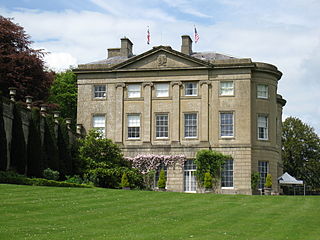 W
WThe American Museum and Gardens is at Claverton, near Bath, England. Its collections of American decorative and folk art are displayed in a Grade I listed 19th-century house, surrounded by gardens overlooking the valley of the River Avon.
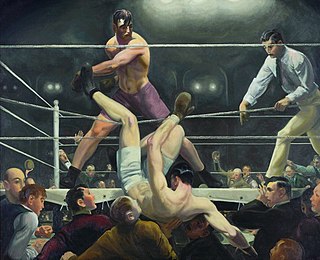 W
WAmerican Realism was a style in art, music and literature that depicted contemporary social realities and the lives and everyday activities of ordinary people. The movement began in literature in the mid-19th century, and became an important tendency in visual art in the early 20th century. Whether a cultural portrayal or a scenic view of downtown New York City, American realist works attempted to define what was real.
 W
WAmerican tea culture encompasses the methods of preparation and means of consumption of tea within the context of the culture of the United States.
 W
WThe Anchor Line was a steamboat company that operated a fleet of boats on the Mississippi River between St. Louis, Missouri, and New Orleans, Louisiana, between 1859 and 1898, when it went out of business. It was one of the most well-known, if not successful, pools of steamboats formed on the lower Mississippi River in the decades following the American Civil War.
 W
WAnti-Tom literature consists of the 19th century pro-slavery novels and other literary works written in response to Harriet Beecher Stowe's Uncle Tom's Cabin. Also called plantation literature, these writings were generally written by authors from the Southern United States. Books in the genre attempted to show that slavery was beneficial to African Americans and that the evils of slavery as depicted in Stowe's book were overblown and incorrect.
 W
WThe Armory Show, also known as the International Exhibition of Modern Art, was a show organized by the Association of American Painters and Sculptors in 1913. It was the first large exhibition of modern art in America, as well as one of the many exhibitions that have been held in the vast spaces of U.S. National Guard armories.
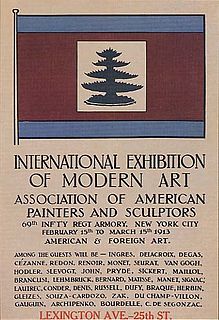 W
WThe 1913 Armory Show contained approximately 1300 works by 300 artists. Many of the original works have been lost and some of the artists have been forgotten. The list of artists in the Armory Show, while not complete, includes nearly all the artists from the United States and Europe who were exhibited in the Armory Show of 1913. The list is largely drawn from the catalog of the 1963 exhibition, 1913 Armory Show 50th Anniversary Exhibition, organized by the Munson-Williams-Proctor Arts Institute. Many exhibitions have been held in the vast spaces of U.S. National Guard armories, but the Armory Show refers to the International Exhibition of Modern Art that was organized by the Association of American Painters and Sculptors and opened in New York City's 69th Regiment Armory, on Lexington Avenue between 25th and 26th Streets, on February 17, 1913, and ran to March 15. It became a legendary watershed event in the history of American art, introducing astonished New Yorkers, accustomed to realistic art, to modern art. The show served as a catalyst for American artists, who became more independent and created their own artistic language.
 W
WThe list of women artists in the Armory Show attempts to include women artists from the United States and Europe who were exhibited in the Armory Show of 1913. The show contained approximately 1300 works by 300 artists. A high proportion of the artists were women, many of whom have since been neglected. The list is largely drawn from the catalog of the 1963 exhibition, 1913 Armory Show 50th Anniversary Exhibition organized by the Munson-Williams-Proctor Arts Institute.
 W
WThe Art Students League of New York is an art school at 215 West 57th Street in Manhattan, New York City, New York. The League has historically been known for its broad appeal to both amateurs and professional artists.
 W
WThe Ashcan School, also called the Ash Can School, was an artistic movement in the United States during the late 19th-early 20th century that is best known for works portraying scenes of daily life in New York, often in the city's poorer neighborhoods.
 W
WThe breeding of enslaved people in the United States was the practice in slave states of the United States of slave owners to systematically force the reproduction of enslaved people to increase their profits. It included coerced sexual relations between enslaved men and women or girls, forced pregnancies of enslaved people, and favoring women or young girls who could produce a relatively large number of children. The objective was to increase the number of slaves without incurring the cost of purchase, and to fill labor shortages caused by the abolition of the Atlantic slave trade.
 W
WChristmas in the United States during the post-war years (1946–1964) reflected a period of peace, productivity, and prosperity. Americans staged sumptuous Christmases and enjoyed a variety of holiday foods unknown to previous generations. Several films, foods, toys, and television programs of the era have become American Christmas traditions.
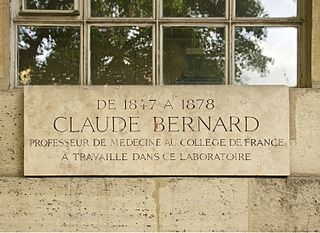 W
WA commemorative plaque, or simply plaque, or in other places referred to as a historical marker or historic plaque, is a plate of metal, ceramic, stone, wood, or other material, typically attached to a wall, stone, or other vertical surface, and bearing text or an image in relief, or both, to commemorate one or more persons, an event, a former use of the place, or some other thing. Many modern plaques and markers are used to associate the location where the plaque or marker is installed with the person, event, or item commemorated as a place worthy of visit. A monumental plaque or tablet commemorating a deceased person or persons, can be a simple form of church monument. Most modern plaques affixed in this way are commemorative of something, but this is not always the case, and there are purely religious plaques, or those signifying ownership or affiliation of some sort. A plaquette is a small plaque, but in English, unlike many European languages, the term is not typically used for outdoor plaques fixed to walls.
 W
WThe cuisine of the antebellum United States characterizes American eating and cooking habits from about 1776 to 1861. During this period different regions of the United States adapted to their surroundings and cultural backgrounds to create specific regional cuisines, modernization of technology led to changes in food consumption, and evolution of taverns into hotels led to the beginnings of an American temperance movement. By the beginning of the Civil War, the United States cuisine and food culture could define itself separately from that of the rest of the world.
 W
WThe cuisine of the Thirteen Colonies includes the foods, bread, eating habits, and cooking methods of the Colonial United States.
 W
WA drive-in theater or drive-in cinema is a form of cinema structure consisting of a large outdoor movie screen, a projection booth, a concession stand, and a large parking area for automobiles. Within this enclosed area, customers can view movies from the privacy and comfort of their cars. Some drive-ins have small playgrounds for children and a few picnic tables or benches.
 W
WEgyptomania was the renewed interest of Europeans and Americans in ancient Egypt during the nineteenth century as a result of Napoleon's Egyptian Campaign. During Napoleon's campaign, he was accompanied by many scientists and scholars which led to a large interest after the documentation of ancient monuments in Egypt. The ancient remains had never been so thoroughly documented before and thus, the interest in ancient Egypt increased significantly. Jean-François Champollion deciphered the ancient hieroglyphs in 1822 by using the Rosetta Stone that was recovered by French troops in 1799 which began the study of scientific Egyptology.
 W
WEmigration from the United States is the process where individuals from the United States move to live in other countries, creating an American diaspora. The process is the reverse of the immigration to the United States. The United States does not keep track of emigration, and counts of Americans abroad are thus only available based on statistics kept by the destination countries.
 W
WThe Federal Art Project (1935–1943) was a New Deal program to fund the visual arts in the United States. Under national director Holger Cahill, it was one of five Federal Project Number One projects sponsored by the Works Progress Administration (WPA), and the largest of the New Deal art projects. It was created not as a cultural activity, but as a relief measure to employ artists and artisans to create murals, easel paintings, sculpture, graphic art, posters, photography, theatre scenic design, and arts and crafts. The WPA Federal Art Project established more than 100 community art centers throughout the country, researched and documented American design, commissioned a significant body of public art without restriction to content or subject matter, and sustained some 10,000 artists and craft workers during the Great Depression.
 W
WThe Federal Theatre Project was a theatre program established during the Great Depression as part of the New Deal to fund live artistic performances and entertainment programs in the United States. It was one of five Federal Project Number One projects sponsored by the Works Progress Administration, created not as a cultural activity but as a relief measure to employ artists, writers, directors, and theater workers. It was shaped by national director Hallie Flanagan into a federation of regional theaters that created relevant art, encouraged experimentation in new forms and techniques, and made it possible for millions of Americans to see live theatre for the first time. Although The Federal Theatre project consumed only 0.5% of the allocated budget from the WPA and was widely considered a commercial and critical success, the project became a source of heated political contention. Congress responded to accusations of racial integration and Communism infiltration and cancelled its funding as of June 30, 1939.
 W
WThe first decorative fountain in the United States was dedicated in Philadelphia in 1809. Early American fountains were used to distribute clean drinking water, had little ornamentation, and copied European styles.
 W
WThe Historical Records Survey (HRS) was a project of the Works Progress Administration New Deal program in the United States. Originally part of the Federal Writers' Project, it was devoted to surveying and indexing historically significant records in state, county and local archives. The official mission statement was the "discovery, preservation, and listing of basic materials for research in the history of the United States."
 W
WThe history of commercial tobacco production in the United States dates back to the 17th century when the first commercial crop was planted. The industry originated in the production of tobacco for pipes and snuff. Different war efforts in the world created a shift in demand and production of tobacco in the world and the American colonies. With the onset of the American Revolution trade with the colonies was interrupted which shifted trade to other countries in the world. During this shift there was an increase in demand for tobacco in the United States, where the demand for tobacco in the form of cigars and chewing tobacco increased. Other wars, such as the War of 1812 would introduce the Andalusian cigarette to the rest of Europe. This, accompanied with the American Civil War changed the production of tobacco in America to the manufactured cigarette.
 W
WThe history of education in the United States, or Foundations of Education covers the trends in educational formal and informal learning in America from the 17th century to the early 21st century.
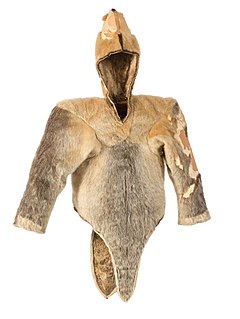 W
WArchaeological evidence indicates that the history of Inuit clothing extends far back into prehistory, with significant evidence to indicate that the basic structure of Inuit clothing has changed little since. The clothing systems of all Arctic peoples are similar, and evidence in the form of tools and carved figurines indicates that these systems may have originated in Siberia as early as 22,000 BCE, and in northern Canada and Greenland as early as 2500 BCE. Pieces of garments found at archaeological sites, dated to approximately 1000 to 1600 CE, are very similar to garments from the 17th to mid-20th centuries, which confirms consistency in the construction of Inuit clothing over centuries.
 W
WThe Hudson River School was a mid-19th century American art movement embodied by a group of landscape painters whose aesthetic vision was influenced by Romanticism. The paintings typically depict the Hudson River Valley and the surrounding area, including the Catskill, Adirondack, and White Mountains. Works by the second generation of artists associated with the school expanded to include other locales in New England, the Maritimes, the American West, and South America.
 W
WLate Modernism: Art, Culture, and Politics in Cold War America is a 2010 intellectual history book by Robert Genter. The author analyzes the history of thought in the postwar United States through prominent scholars, from literary critics and painters to sociologists and public intellectuals.
 W
WLiving Newspaper is a term for a theatrical form presenting factual information on current events to a popular audience. Historically, Living Newspapers have also urged social action and reacted against naturalistic and realistic theatrical conventions in favor of the more direct, experimental techniques of agitprop theatre, including the extensive use of multimedia. Living Newspapers originated in Russia during the Bolshevik Revolution,
 W
WIn the United States, a military brat is the child of a parent or parents serving full-time in the United States Armed Forces, whether current or former. The term military brat can also refer to the subculture and lifestyle of such families.
 W
WThe Puritan culture of the New England colonies of the seventeenth century was influenced by Calvinist theology, which believed in a "just, almighty God," and a lifestyle of pious, consecrated actions. The Puritans participated in their own forms of recreational activity, including visual arts, literature, and music. The Puritans were educated and literate, and their culture was broadly based in the arts and languages.
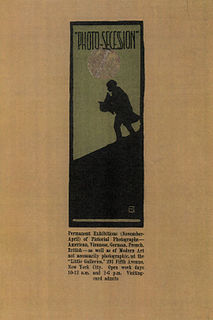 W
WThe Photo-Secession was an early 20th century movement that promoted photography as a fine art in general and photographic pictorialism in particular.
 W
WSlavery in the United States was the legal institution of human chattel slavery, comprising the enslavement primarily of Africans and African Americans, that existed in the United States of America from its founding in 1776 until the passage of the Thirteenth Amendment in 1865. Slavery was established throughout European colonization in the Americas. From early colonial days, it was practiced in Britain's colonies, including the Thirteen Colonies which formed the United States. Under the law, an enslaved person was treated as property and could be bought, sold, or given away. Slavery lasted in about half of U.S. states until 1865. As an economic system, slavery was largely replaced by sharecropping and convict leasing.
 W
WA soda jerk is a person—typically a youth—who operates the soda fountain in a drugstore, often preparing and serving soda drinks and ice cream sodas. These are made by mixing flavored syrup, carbonated water, and occasionally malt powder over either ice or a few scoops of ice cream. The drink would then be served in a tall glass with a long-handled spoon, most commonly known as a "soda spoon", and drinking straws.
 W
WTall Betsy is a cultural Halloween icon originating in Bradley County, Tennessee, United States. Tall Betsy was declared the "Official Halloween Goblin" of Bradley County in 1989.
 W
WThe Ten American Painters was an artists' group formed in 1898 to exhibit their work as a unified group. John Henry Twachtman, J. Alden Weir, and Childe Hassam were the driving forces behind the organization. Dissatisfied with the conservatism of the American art establishment, the three artists recruited seven others from Boston, New York City, and elsewhere on the East Coast, with the intention of creating an exhibition society that valued their view of originality, imagination, and exhibition quality. The Ten achieved popular and critical success, and lasted two decades before dissolving.
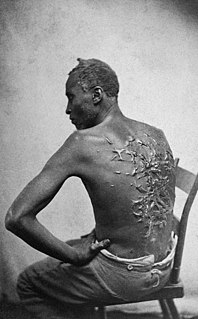 W
WThe treatment of enslaved people in the United States varied by time and place, but was generally brutal, especially on plantations. Whipping and rape were routine, but usually not in front of white outsiders, or even the plantation owner's family. An enslaved person could not be a witness against a white; enslaved people were sometimes required to whip other enslaved people, even family members. There were also businesses to which a slave owner could turn over the whipping. Families were often split up by the sale of one or more members, usually never to see or hear of each other again. There were some relatively enlightened slave owners—Nat Turner said his master was kind—but not on large plantations. Only a small minority of enslaved people received anything resembling decent treatment; one contemporary estimate was 10%, not without noting that the ones well treated desired freedom just as much as those poorly treated. Good treatment could vanish upon the death of an owner. As put by William T. Allan, a slaveowner's abolitionist son who could not safely return to Alabama, "cruelty was the rule, and kindness the exception".
 W
WThe swastika is an ancient Eurasian religious symbol with the earliest known example found in Mezine, modern Ukraine, that generally takes the form of an equilateral cross with four legs each bent at 90 degrees in either right-facing (卐) form or its mirrored left-facing (卍) form. It is considered to be a sacred and auspicious symbol in Hinduism, Buddhism, and Jainism and dates back at least 11,000 years.
 W
WWhite Mountain art is the body of work created during the 19th century by over four hundred artists who painted landscape scenes of the White Mountains of New Hampshire in order to promote the region and, consequently, sell their works of art.
 W
WWorld Championship Wrestling (WCW) is a defunct American professional wrestling promotion that existed from 1988 to 2001. It began as a promotion affiliated with the National Wrestling Alliance (NWA) that appeared on the national scene under the ownership of media mogul Ted Turner and based in Atlanta, Georgia. The name came from a wrestling television program that aired on TBS in the 1980s, which had taken the name from an Australian wrestling promotion of the 1970s.
 W
WThe history of WWE dates back to the early 1950s when it was founded in 1953 as Capitol Wrestling Corporation (CWC). It underwent several name changes throughout the years, from World Wide Wrestling Federation (WWWF) in 1963 to World Wrestling Federation (WWF) in 1979, and finally to World Wrestling Entertainment (WWE) in 2002, with the latter being strictly abbreviated to WWE in 2011.
 W
WThe Young America Movement was an American political and cultural attitude in the mid-19th century. Inspired by European reform movements of the 1830s, the American group was formed as a political organization in 1845 by Edwin de Leon and George Henry Evans. It advocated free trade, social reform, expansion westward and southward into the territories, and support for republican, anti-aristocratic movements abroad. It became a faction in the Democratic Party in the 1850s. Senator Stephen A. Douglas promoted its nationalistic program in an unsuccessful effort to compromise sectional differences.